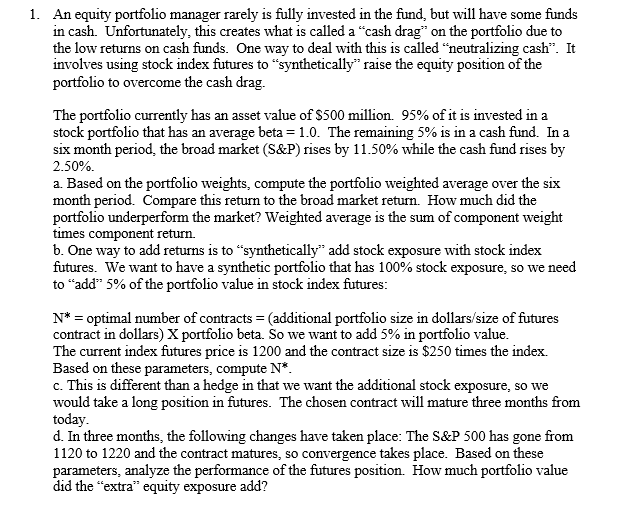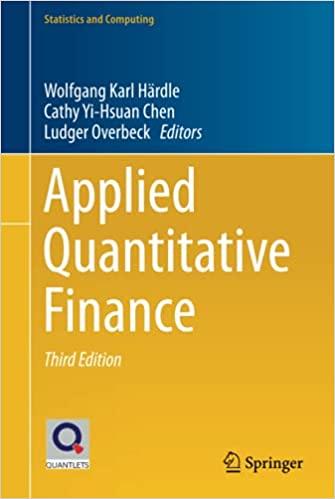Answered step by step
Verified Expert Solution
Question
1 Approved Answer
An equity portfolio manager rarely is fully invested in the fund, but will have some funds in cash. Unfortunately, this creates what is called a
An equity portfolio manager rarely is fully invested in the fund, but will have some funds
in cash. Unfortunately, this creates what is called a "cash drag" on the portfolio due to
the low returns on cash funds. One way to deal with this is called "neutralizing cash". It
involves using stock index futures to "synthetically" raise the equity position of the
portfolio to overcome the cash drag.
The portfolio currently has an asset value of $ million. of it is invested in a
stock portfolio that has an average beta The remaining is in a cash fund. In a
six month period, the broad market S&P rises by while the cash fund rises by
a Based on the portfolio weights, compute the portfolio weighted average over the six
month period. Compare this return to the broad market return. How much did the
portfolio underperform the market? Weighted average is the sum of component weight
times component return.
b One way to add returns is to "synthetically" add stock exposure with stock index
futures. We want to have a synthetic portfolio that has stock exposure, so we need
to "add" of the portfolio value in stock index futures:
optimal number of contracts additional portfolio size in dollars size of futures
contract in dollars portfolio beta. So we want to add in portfolio value.
The current index futures price is and the contract size is $ times the index.
Based on these parameters, compute
c This is different than a hedge in that we want the additional stock exposure, so we
would take a long position in futures. The chosen contract will mature three months from
today.
d In three months, the following changes have taken place: The S&P has gone from
to and the contract matures, so convergence takes place. Based on these
parameters, analyze the performance of the futures position. How much portfolio value
did the "extra" equity exposure add?

Step by Step Solution
There are 3 Steps involved in it
Step: 1

Get Instant Access to Expert-Tailored Solutions
See step-by-step solutions with expert insights and AI powered tools for academic success
Step: 2

Step: 3

Ace Your Homework with AI
Get the answers you need in no time with our AI-driven, step-by-step assistance
Get Started


